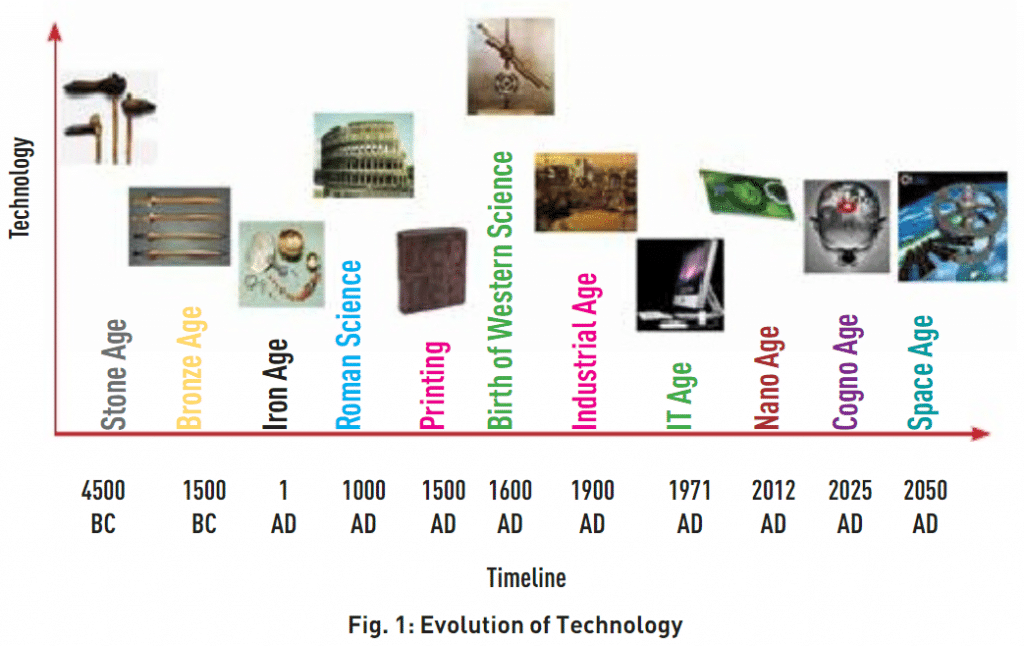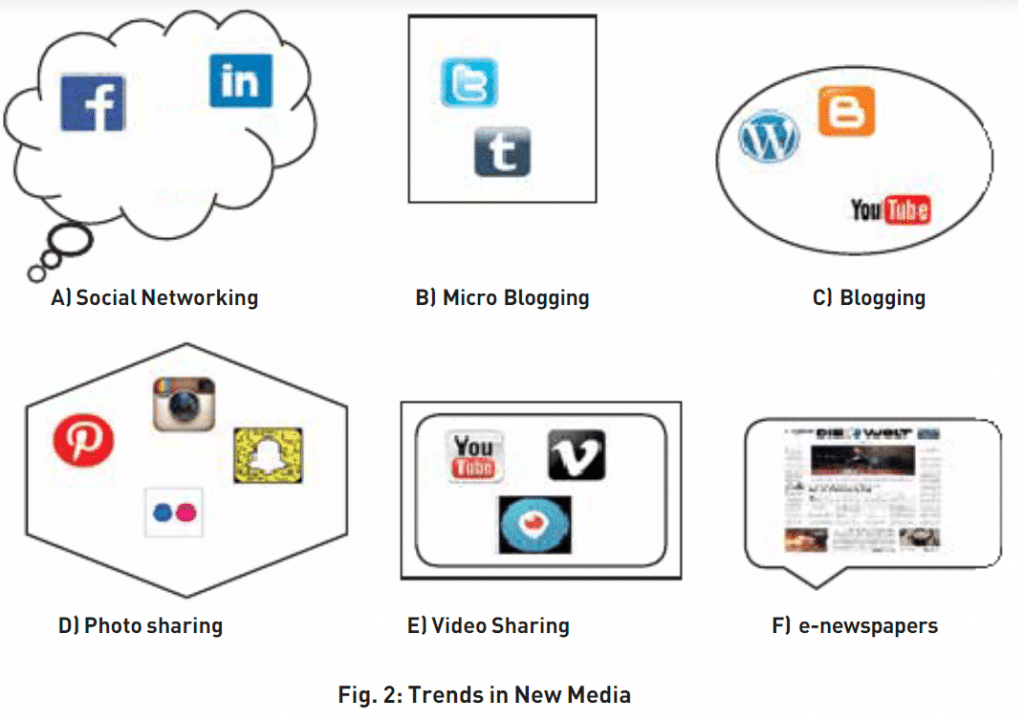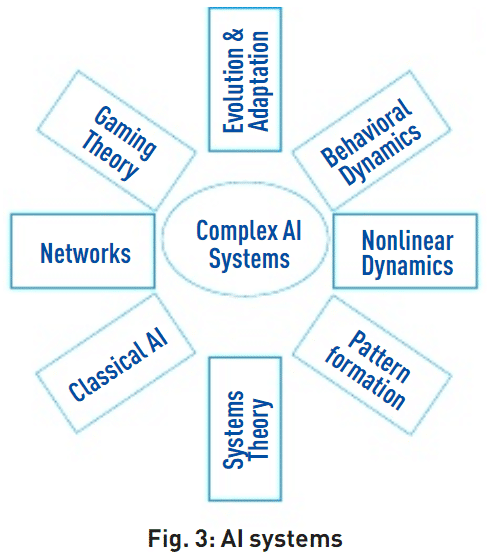1. Introduction and definition
New media can be defined as a highly interactive digital technology which allows people to interact anywhere anytime.
This has evolved as a non-tangible channel for communication on the preset of growth in Information Technology.
The ability to transform content to a digitized format allowed new-age media to take shape within the internet.
Accessibility through hand-held devices like mobile platforms, personal computers, digital devices, and virtual computing machines has aided the growth of new-age media.
The medium of new media is not just restricted to social networking platforms, blogs, online newspapers, digital games and virtual reality, but any aspect of communication that can be communicated real-time, processed, stored and delivered in formats of data instantaneously.
Accessibility, speed of data access, reversibility & storage capacity are the basic three parameters which characterize new media.
Since new media creates a medium which is basically ones and zeros, which represents all aspects of digital data representing human senses such as seeing or hearing, including video, audio and tactile data.
In the past decade the rapid development in Artificial Intelligence has led to the evolution of more intelligent new media in the realm of communications.
Machine learning codes can simulate the role of human cognitive abilities, they have the information storage and processing abilities to represent or imitate a human level of communication.

2. The Evolution of New Media
The growth of new media has progressed through riding the wave of technological progress over the evolution of our species.
Around 500,000 years ago the migrating human species started representing data through engravings at different geographical locations.
And the irony is that the world’s first known drawing from 73,000 years ago looked like a hashtag.
It is thought to be inspired by the urge to communicate, co-operate and share the basic aspects of the human species.
With the advancement of civilization, the cognitive ability of humans expanded along with the invention of more tools and crafts like terracotta, dyes, inks, cotton etc., allowing us to use improved languages and visual arts.
Special techniques of carving and writing aided the representation of data from the environment and expressing creativity in a more refined way.
This advancement in technology subsequently led to the development of paper in 220 AD, China.
The breakthrough in paper processing led to the evolution of books – recording and keeping information, which eventually led to rapid communication with the invention of the printing press in 15th Century Europe.
Further technological breakthroughs in the late 18th and early 19th centuries on sound and video led to the evolution of transmission.
The combination of audio and video revolutionized modern broadcasting.
The invention of the transistor in 1947 and the ultimate integration of the first Pentium processor in 1970 transformed data communication, controlling and computation.
The data representation and growth in communication eventually led to new media by the early 2000s.
The evolution of technology is shown in Fig. 1 above.
3. The Composition of New Media
New media encompasses all aspects of digitized data being created, consumed and communicated over the internet using digital devices.
Even the old media found new ways of expressing themselves within the new media landscape in the form of e-newspapers, e-books, etc.
The mass availability of smart-phones has led to a revolution in the social and interactive spaces.
Standalone social networking platforms like Twitter, Facebook, and Instagram have all tried to integrate old-ways of chat boxes along with advertisement and e-commerce.
Generally, new media can provide a more accurate data on different parametric aspects like a users age-group, digital platform, communication platform, accessibility, location, content generation, security, computational methods, algorithm, and the number of users to name a few.
Since it is an ever-evolving technology-based phenomenon, it is difficult to categorize new media under one specific parameter. A more scientific classification would be based on semantics and user interfaces.
Some of the recent trends in new media are listed in Fig. 2 below.

The list also includes video games, virtual reality, real-time chat interfaces and dating sites with digital interactivity like Tinder for example.
The new media of today can be characterized broadly based on the following parameters
- Digital (Extend of digitization)
- Interactivity (Number of users/transaction)
- Hypertextual
- Virtual (Integration of Virtual /Augmented reality)
- Networked (Accessibility and reach)
- Simulated (Flexibility and usability)
4. The Future of New Media
Self-learning, self-controlling and self-communicating standalone intelligent systems have enabled entirely different paradigms in recent years.
Virtual reality and gaming uses programming abilities to create totally new environments or replicate existing environments.
This is enabled through users being able to interact and interface virtual objects and spaces in that environment.
Graphics, games and simulations have flooded open the gates wherein each individual recreates their imagination in the virtual world.
For example, according to TV[R]ev Magazine, the online P2P game Fortnite has become the most preferred social media experience for teenagers.
In a similar way augmented reality has enabled users to directly or indirectly view the real environment and at the same time interact with it, using computer-generated audio, video or touch.
Future new media will use computer programs to enable users to supplement real or virtual world environments with digital objects.
In a broader sense virtual reality, intelligent systems and automation could slowly replace different aspects of industry, human interaction and progress of the human species at large.
5. The Role of AI and Machine Learning
Human-based content generation will be taken over by machines and software algorithms, capable of imitating human cognitive abilities.
This is already happening with some old media companies using Artificial Intelligence to turn their data into news, through services provided by companies such as Narrative Science, which has even received an investment from the funding-arm of the CIA.
This is leading to a new way of generating, communicating and consuming data (mass communication).
Social networking platforms and personalized communication will become more intelligent and sophisticated.
In the immediate near future, the human emotions which are being conveyed as data and communication by humans will be equally contributed by machines.
Combined with virtual and augmented reality, self-learning systems or intelligent systems will percolate mass and personal communication.

Artificial intelligence is a broad name suggesting concepts developed over the years and which are being implemented even more rapidly at the time of writing due to improved computing power like microprocessors, graphical processors and microcontrollers which are able to compute large volumes of data in short duration.
With the introduction of quantum computers, the information processing capability of automated systems will become yottabytes per second.
According to ZMEScience.com, “In 2010, it would have cost $100 trillion to make a yottabyte storage system made out of the day’s hard drives.”
AI can be roughly defined as the ability of manmade computing devices to replicate and perform the cognitive functions of a human brain.
The ultimate vision for AI is to achieve complexity and flexibility like human brains. The formal methods to achieve these visions are statistical methods, computational intelligence and traditional AI tools.
The traditional AI tools are symbolic approaches to computing problems. The most commonly used symbolic approach has been expert systems.
Whenever symbolic representations failed to achieve a good decision-making ability, it led to a modified representation using fuzzy-logic and artificial neural networks to be developed.
Modern AI tools have become more human-like tools with progressive integration of the higher-level intelligence aspects of a human brain’s cognitive abilities.
These abilities include slow and steady progress towards myth emotions, creativity, imagination, dreams, higher philosophy and ultimate consciousness. But though these utopian abilities are long-term, great progress is being made towards achieving them.
The methodologies include cybernetics & brain simulation, symbolic intelligence, machine learning, cognitive simulations, logic programming, knowledge-based computing, embodies computing, computational intelligence, machine learning or self-learning systems and other forms of intelligent computing.
Now the question arises how to achieve these ultimate goals. The complex process cognition can be achieved only through integrating different methodologies.
The two most common approaches are agent architecture and cognitive architecture. Describing each and every aspect of AI is beyond the scope of this article. So it’s more time-worthy to explain the tools required to implement these methodologies.
The tools include machine intelligence to search large databases and optimize solutions (search algorithm, mathematical optimization, evolutionary algorithm), logic-based programming (automated reasoning, logic-based decisions), probabilistic tools (bayesian networks, kalmann filtering, decision theory, utility theory), classifiers (classical mathematics, machine learning, statistical classification), neural networks (Artificial Neural Networks (ANN), connectionism), deep feed-forward neural networks (deep learning, image processing, computer vision, speech processing, natural language processing), deep recurrent neural networks and intelligent control systems with a hierarchy based approach.
The aspects of these AI tools are shown in Fig. 3 above.
6. The Impact of New Media
The impact of new media on human life has become more complicated in recent years.
The societal impact and individual personalized impact is beyond question.
As a species the content generated by users conveyed through machines is the norm but whether it has an evolutionary impact is debatable.
The recent social and political revolutions in the Middle East, Africa, Europe, Asia and the Americas are a direct result of new media’s social networking platforms. With the most recent example being the Telegram application being used by protestors in Hong Kong.
The gender equality revolution happening around the world is purely a magic of new media.
The chains which couldn’t be broken down in the male-dominated centuries before the 21st Century are being undone by new media in a matter of years.
New media has directly impacted financial transactions and commercial activities.
This has enabled the evolution of banking systems without physical infrastructures which are elevating billions of people out of poverty in Asia, Africa and America.
Nation-states are more concerned about security, and social media has been playing a viable role in complicating as well as finding solutions to new security-related issues.
Globalization has been further strengthened by social media.
The transformation being brought by new media between communities, societies and nations is largely based on technological breakthroughs.
The detailed study of the impact of new media on individual human behavior, emotions and aspirations is beyond the scope of this limited article.
7. Conclusion
In the story of our evolution, new media is one aspect of our current progress, enabled through technology.
Technological progress cannot be stopped, and this will have a direct impact on how humans consume, share and communicate data.
The current progress in computational platforms will have a deeper impact than what happened with the Radio, Television and Internet.
The wireless world will be more interesting with virtual reality, communicating machines and more importantly emotional and intelligent machines.
As an off-shoot of this cognitive technology development, new media will give way to intelligent media.
References:
[1] Lev Thackara, “The language of new media, Leonardo Book Series, MIT Press, 2002.
[2] John Carey and Martin C. J. Elton, “When Media Are New: Understanding the Dynamics of New Media Adoption and Use,” Michigan Publishing , University of Michigan Library, 2010.
[3] Rabinder Henry, Lecture notes “Science, Engineering and Technology,” PPCRC, 2014.
[4] Bebo White, Irwin King, Philip Tsang, “Social Media Tools and Platforms in Learning Environments,” Springer New York, 2011.
About the Author:
Rabinder Henry (CSI Life Membership No. 2010000175) is a Director of Pralhad P. Chhabria Research Center. He received the Master of Science degree in RF & microwave engineering and Photonics from Technical University of Dresden, Germany and the Master of Science degree in Medical systems engineering from Otto-Von-Guericke University Magdeburg, Germany.





